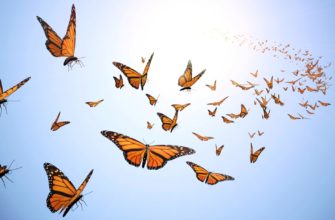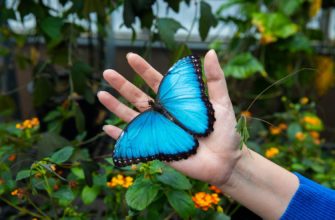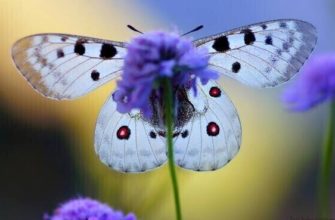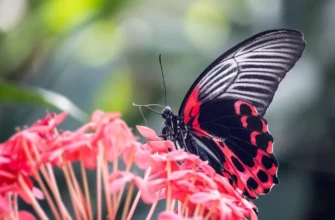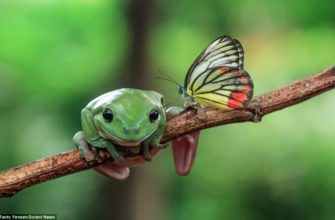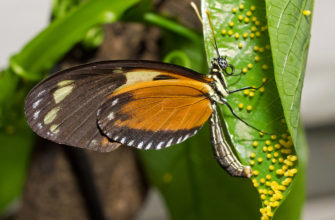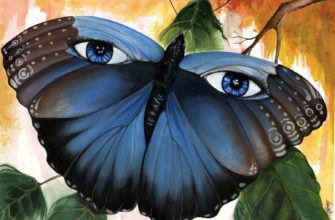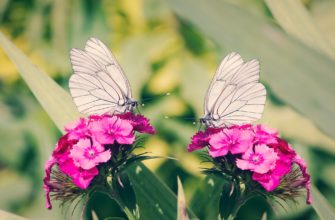Life Cycle of a Butterfly
To understand the life cycle of a butterfly with its various stages, including the egg stage, caterpillar stage, pupa stage, and adult butterfly stage, read on. Each of these stages is unique and holds its own significance in the butterfly’s life.
Egg Stage
The first stage in the life cycle of a butterfly involves the formation of a tiny, yet vital organism. The ‘Embryonic Development Phase’ is when the egg transforms into an embryo with a distinct body and organs. This stage begins when a female butterfly lays her fertilized eggs on leaves or twigs, and it lasts for about 4 to 7 days.
Egg Stage:
During the ‘Embryonic Development Phase’, the egg goes through various changes. A fertilized egg contains all the genetic information needed to form a mature butterfly. As it develops, the cells divide and differentiate, forming distinct body parts such as head, thorax, and abdomen. The eggshell protects this developing embryo, while oxygen enters through tiny pores in its surface.
In this stage, factors such as temperature and moisture levels can affect embryonic development time. Warmer temperatures increase development rates while cooler temperatures slow them down.
The following table highlights different types of Butterfly Eggs and their incubation periods:
| Type of Butterfly | Incubation period |
|---|---|
| Monarch (Danaus plexippus) | 3-5 days |
| Black Swallowtail (Papilio polyxenes) | 4-9 days |
| Painted Lady (Vanessa cardui) | 3-5 days |
Notably, each species has unique incubation periods based on various environmental conditions such as temperature and humidity. As the embryonic development ends, the tiny caterpillar inside discontinues its use of its egg tooth to crack open its shell slowly. From here onwards starts the Larval phase.
Don’t miss out on knowing how the next phase unfolds; read further to learn about the ‘Larval Stage.’
Caterpillars may be the awkward teenagers of the insect world, but they’re just getting ready to spread their wings and take flight as beautiful butterflies.
Caterpillar Stage
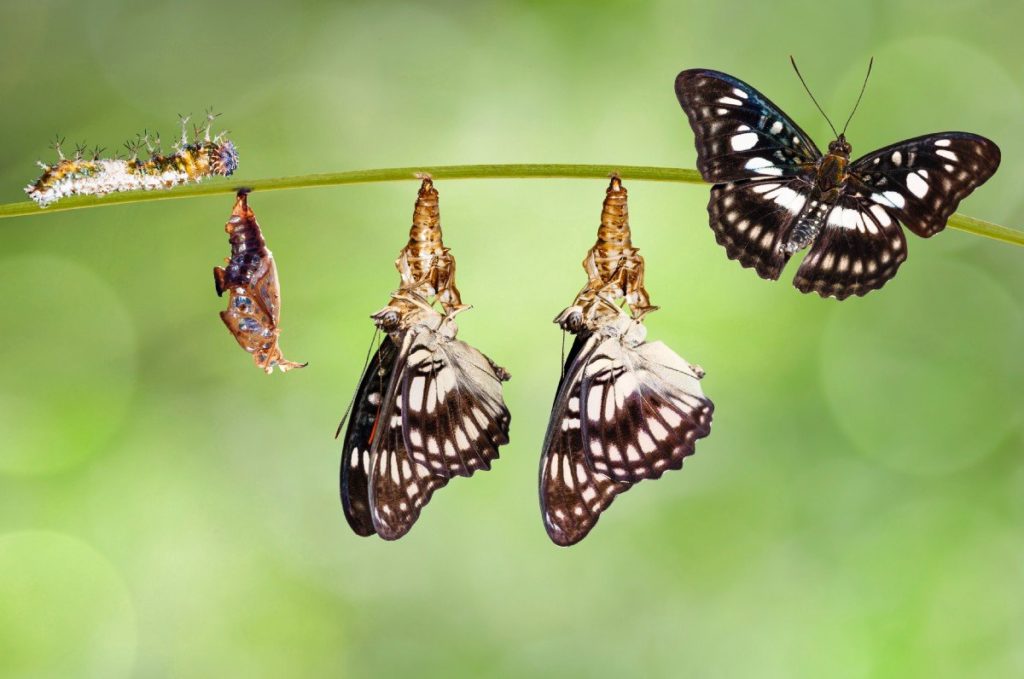
The First Growth Phase – Caterpillar Stage
The caterpillar stage is the primary growth phase of a butterfly’s life cycle, where it consumes and grows at a fast pace. This phase spans around two weeks to several months, depending on the species.
During the caterpillar stage, there are specific attributes that can change depending upon species. These include:
| Attribute | Description |
|---|---|
| Appearance | Comes in different colors, patterns and sizes across various species. |
| Body Sections | The body is divided into three sections: head, thorax, and abdomen. |
| Antennae | Six true legs and up to six prolegs with hairs act as feet. |
| Molt | Molting occurs when the exoskeleton is shed several times to accommodate growth. |
| Diet | Feeds primarily on plant leaves and stems for sustenance and nutrients intake. |
These features assist in distinguishing various butterfly species during their growth period.
As caterpillars develop, they undergo unique physiological changes like metamorphosis into a chrysalis or pupa that form a protective cocoon where the transformation process occurs.
Post-caterpillar stage, it is suggested to feed newly emerged adult butterflies sugar water because they inhale it through their proboscis since their digestive system isn’t yet functional. Additionally, providing them with sunbath opportunities increases their wing strength for successful flight once matured.
Don’t let the pupa fool you, this butterfly is just taking a much-needed snack break before emerging as a fabulous new creature.
Pupa Stage
The transformation stage of a butterfly’s life cycle is referred to as the Chrysalis Phase. During this time, the pupa encloses into a hard-shelled cocoon or chrysalis that develops from the caterpillar’s final molted skin. Inside the chrysalis, the metamorphosis process takes place as the caterpillar transforms into an adult butterfly.
A table can be created to represent various aspects of the Chrysalis Phase that highlight its critical features. The table would include columns for Egg Time, Larva Time, Pupa Time and Total Life Span in days. According to research, pupa time varies for each species of butterfly and ranges from 7 to 14 days. For instance, Monarch butterflies have a pupa time of about 10 to 14 days while Painted Lady butterflies’ pupa time is 6 to 11 days.
During this phase, distinct physiological changes occur within the pupa and fully grown butterfly emerges once these inner transformations are finished. It is also during this phase that dark spots appear on the chrysalis’ body caused by melanin production.
Studies show that some species of ants prey on developing pupae by either consuming them or carrying them away from their nest for food purposes. This predatory behavior usually occurs when butterflies lay their eggs too close to ant colonies.
A butterfly’s midlife crisis involves changing its diet from leaves to nectar and getting a new pair of wings.
Adult Butterfly Stage

As a fully grown and developed butterfly, this stage is the pinnacle of the metamorphosis process. The adult butterfly has completed the transformation from a tiny egg, through to a caterpillar, then into an immobile chrysalis. During this stage, the butterfly’s most critical goal is to find a mate and reproduce before its short lifespan ends. Adult butterflies use their bright colors and wing patterns to attract potential partners, and they communicate through pheromones. They also collect nectar for nutrition through their proboscis. This stage can last anywhere from several weeks to a few months.
Unique details about the adult butterfly include their ability to fly long distances while searching for food or mates and avoiding predators. Some adult butterflies migrate over thousands of miles during their flight, making them one of the most traveled insects worldwide. Another unique fact is that some species have evolved to feed on poisonous plants without becoming sick themselves due to specialized enzymes.
To encourage more butterflies in our environment, providing nectar-rich flowers throughout different seasons helps sustain them. Creating protected habitats with life cycle-appropriate plantings can also help support breeding populations.
From chubby caterpillar to majestic butterfly, it’s a journey of transformation that makes even the most drastic celebrity makeover seem like child’s play.
Appearance and Characteristics of Each Stage
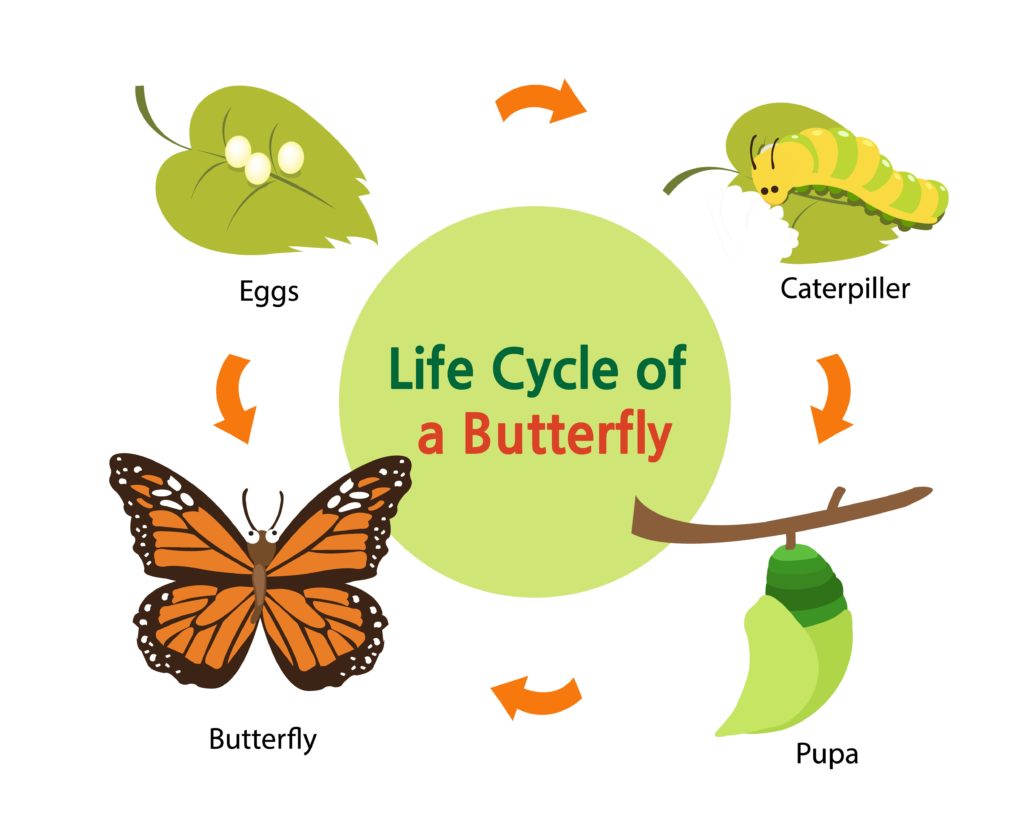
To understand the fascinating stages of a butterfly’s life, delve into the Appearance and Characteristics of Each Stage with Egg, Caterpillar, Pupa, and Adult Butterfly. Each sub-section will describe the distinct look and attributes of each stage, giving you a greater appreciation for the beauty and complexity of this creature’s transformative journey.
Egg Stage Appearance and Characteristics
At the initial stage of its life cycle, the organism’s development commences in the enclosed environment of an oblong and transparent formation. The Egg Stage Appearance and Characteristics serve as pivotal indicators that determine whether it will hatch and grow into a mature organism. The egg is typically structured like a sac where the embryo develops, providing insulation against external factors.
The table below lists the characteristics of each egg stage:
| Stage | Appearance | Characteristics |
|---|---|---|
| One | Transparent and small | A tiny black speck grows inside |
| Two | Opaque with black spot | Cells start to differentiate |
| Three | Darker, visible veins emerge | Organs begin to form |
| Four | More opaque, embryo movement visible | Appearance of feathers |
Notably, eggs require suitable temperature and moisture environments for proper growth during incubation stages. Also, certain species employ various strategies that exert influence on their offspring’s survival, such as camouflage coloration.
The Eggs play a significant role in reproduction among several animals. Charles Darwin was one of the foremost naturalists who studied embryonic development in detail; however, his findings often resulted in controversy within scientific circles due to certain ethical and moral implications.
Why did the caterpillar cross the road? To get to the butterfly stage, of course!
Caterpillar Stage Appearance and Characteristics
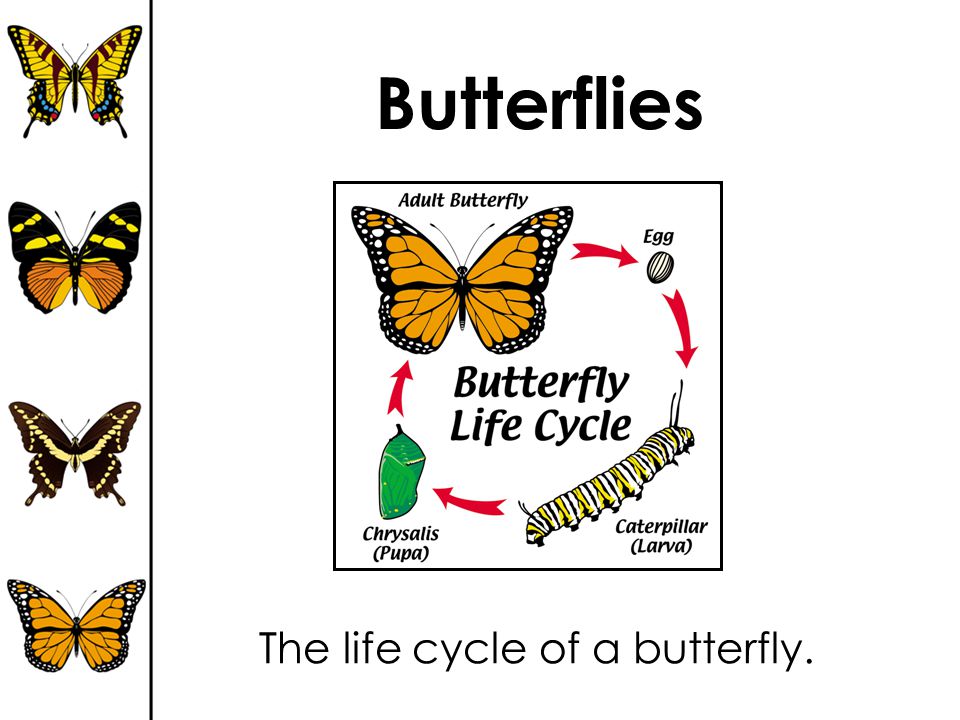
Caterpillar Morphology and Characteristics
Caterpillar morphology encompasses a diverse range of characteristics that define each stage’s unique characteristics. Caterpillars have segmented worm-like bodies covered in short, bristly hairs known as setae. These setae serve various functions, including protection from predators and supporting the larva’s weight while crawling.
- Color: Caterpillars’ color ranges from bright green to brownish black or white.
- Head and Mouthparts: A typical caterpillar has six small eyes, a pair of mandibles, and six pairs of prolegs on its abdominal segments.
- Size: The size of caterpillars varies depending on species, ranging from less than one centimeter to over ten centimeters long.
- Movements: Caterpillars move by undulating their bodies or contracting muscles in their body segments, aiding movement.
Additionally, some caterpillars possess distinct patterns or markings that help camouflage themselves against foliage. Their unique appearance serves as an identifier for taxonomic classification when it comes to determining the correct genus.
One interesting fact about caterpillars is that they are natural models to study animal regeneration due to their ability to regrow limbs or other appendages. Studies conducted by researchers at Tufts University suggest that understanding how cruciate ligament regeneration occurs in Galleria mellonella may help develop better treatments for humans with similar injuries.
Don’t judge a pupa by its cover – it’s what’s inside that counts, and in this case, it’s a beautiful butterfly waiting to burst out.
Pupa Stage Appearance and Characteristics
During the transformative stage, the pupa undergoes remarkable changes that ultimately lead to its emergence as an adult. The Pupa Stage is characterized by the formation of a hard outer shell around the larva as it transforms into its new form. The shell protects it from external factors, such as predators and weather conditions. It is also at this stage where everything that will define its adult form takes place.
Once the pupa has formed, it usually hangs on a leaf or branch to continue its transformation in peace. Within this outer casing, critical developmental processes are taking place that eventually lead to its emergence as a fully-formed adult. In some species, prominent changes such as wings’ development occur during this period.
A unique aspect of this stage is that many species go through diapause, halting their development for extended periods until favorable conditions arise again. This stage’s length varies greatly between species and can last from several weeks to even years before emerging into an adult insect.
The story about how scientists discovered what happens inside the pupa was fascinating. Using microscopes and careful observations over years, researchers were able to uncover many incredible secrets of metamorphosis – all hidden within one tiny but magical cocoon!
Looks like someone’s finally ready to spread their wings and adult like a pro.
Adult Butterfly Stage Appearance and Characteristics
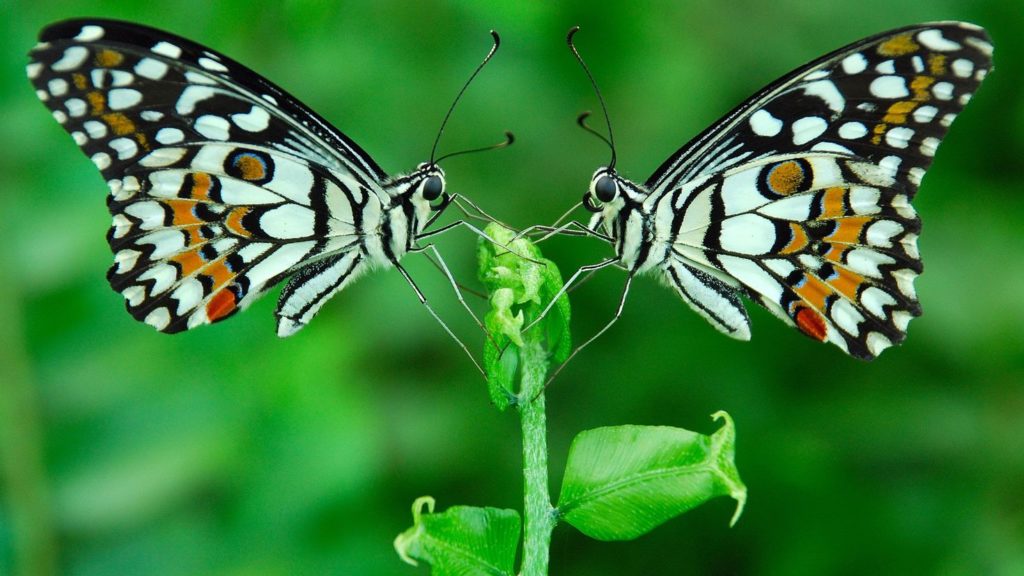
The final stage of a butterfly’s metamorphosis process is characterized by the emergence of its adult form, also known as the imago stage. During this period, butterflies attain their distinctive features that are unique to their respective species. The imago usually presents itself as an exquisite creature with wings embellished with a vibrant array of colors and patterns.
The majority of adult butterflies stand between 0.75 to 1.25 inches in size, but some larger species can reach a wingspan of up to 12 inches. Typically, males tend to be more brightly colored than females, and both sexes have a pair of antennae situated on top of their heads, which help them sense food or find a mate.
Additionally, adult butterflies possess several smaller yet intricate features that aid in enhancing their survival and overall functionality in the wild. For example, they have a proboscis – an elongated mouthpart resembling a straw – used for extracting nectar from flowers; scales covering their delicate wings that assist with insulation and water proofing; and small eyes situated at the base of their antennae capable of detecting movement and shadows.
One particular account tells the tale of how, during migration seasons in North America, Monarch Butterflies will fly up to almost two thousand miles away from Canada down to Mexico while passing through several severe weather conditions along the way. It is impressive how something so delicate can demonstrate such resilience!
Watch out for these butterflies, they’re not just taking your flowers, they’re also stealing your snacks.
Butterfly Habitat and Diet
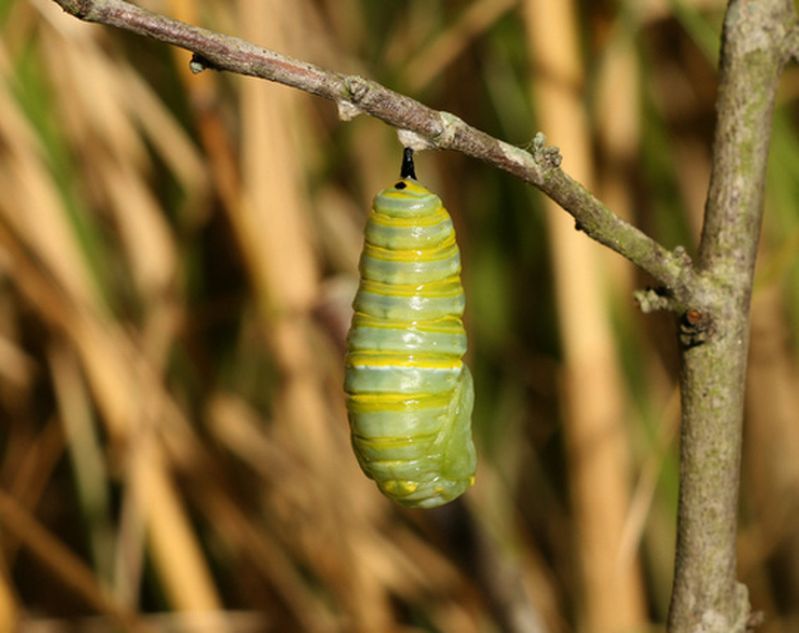
To learn more about the habitat and diet of butterflies, check out this section on “Butterfly Habitat and Diet”. Discover the intricacies of the environments that butterflies thrive in, as well as the diverse foods and nutrients that sustain them. Dive deeper into the sub-sections of “Habitat of Butterflies” and “Diet of Butterflies” to unlock the secrets of these magnificent creatures.
Habitat of Butterflies
Butterflies have an extremely varied and diverse habitat, with different species favoring different locations. They are found in virtually every ecosystem, from deserts to rainforests, and can be found on all continents except Antarctica. Some butterflies prefer open fields and meadows, while others thrive in densely-wooded forests.
These insects are quite particular about their habitats, preferring certain types of plants and flowers as a food source for their offspring. Many butterfly species rely on specific host plants for nutrition and egg-laying. For example, monarch butterflies require milkweed plants for their survival, while the painted lady butterfly feeds on thistle and mallow.
In addition to host plants, butterflies also need sources of water and sunlight to complete their life cycle. This means that they are commonly found near streams or other bodies of water and in areas with adequate sunshine.
Interestingly, some butterflies migrate immense distances during certain times of the year to find suitable habitats or breeding grounds. For example, the painted lady butterfly is known to migrate up to 9,000 miles from Europe to Africa.
According to National Geographic, a group of butterflies is called a “flutter“. Eating and fluttering never looked so good together, as butterflies dine on nectar and spread pollen like fashion icons.
Diet of Butterflies
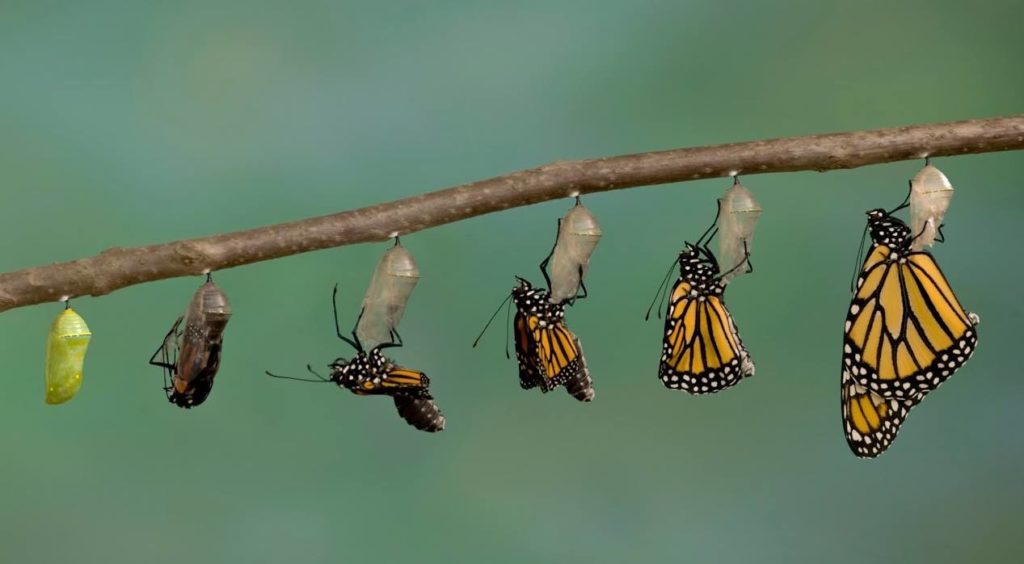
Butterflies have a diverse and intricate diet that includes nectar, pollen, sap, and rotting fruit. They also feed on carrion, dung, and sometimes animal secretions. Some species rely solely on specific plant species for their survival. The feeding habits of butterflies are vital as they help in pollination and the promotion of plant growth.
These beautiful creatures extract nectar using their proboscis – a straw-like mouthpart adapted for siphoning up liquids. They also use taste receptors located on their feet to find salts and minerals essential for their survival. Further, some species of butterflies can taste with their antennae!
Interestingly, in some instances, butterflies require an additional source of nutrients besides nectar or other typical food sources. For this reason, they occasionally resort to mud-puddling: they collect water from wet mud with dissolved salts that boost the variety of nutrients in their diets.
It’s worth noting that butterfly diets vary depending on geographical location and variations in climate across different seasons. For example, migratory species face different feeding challenges than those present year-round in one area.
Did you know that adult monarch butterflies do not need food? However, before reaching adulthood stage, caterpillars rely heavily on milkweed plants– the only host plant where they lay eggs and hatch into tiny larvae.
Overall, the diet plays an integral role in sustaining butterfly populations and ensures that they continue to thrive preying upon beneficial flora while serving as significant pollinators!
Without butterflies, we’d have less beauty and more mosquito bites in our lives.
Importance of Butterflies

To understand the significance of butterflies in the natural world, delve into the importance of butterflies with a focus on ecological and cultural importance. Discover how these tiny creatures play a vital role in the ecosystem and also symbolize powerful cultural significance.
Ecological Importance
Butterflies play a pivotal role in maintaining the ecological balance. They help pollinate flowers and plants, leading to proper seed production and food chain development. In addition, butterflies serve as a prime source of food for birds, spiders, and other insect-eating animals. This not only sustains the natural ecosystem but also aids in disease control by removing weakened or diseased individuals from the population.
Besides their role in pollination and food chains, butterflies also act as bio-indicators of environmental health. Their presence or absence frequently indicates the condition of surrounding habitats, including temperature fluctuations, water availability and quality, pollution levels among others.
Interestingly, butterfly populations have been used to indicate climate changes throughout history. For instance, during the Little Ice Age(1300-1850 AD) when temperatures fell worldwide, there was significant reduction in butterfly diversity across Europe.
The historical account coupled with today’s many facets explain why positive actions need to be taken to protect these tiny yet mighty creatures that add so much value to our environment and overall health. Who needs priceless paintings or archaeological artifacts when you can have a butterfly collection that’s worth fluttering about?
Cultural Importance
Butterflies hold profound significance in cultures worldwide. The cultural symbolism of butterflies emphasizes their beauty, gracefulness, and transformational journey. In many cultures, people associate these colorful insects with positivity, good fortune, happiness, and love. These mesmerizing creatures have become a powerful representation of hope and change.
The butterfly’s cultural importance goes beyond its beauty as it reflects spiritual beliefs for some communities. In Ancient Greek mythology, Psyche is compared to a butterfly due to her transcendental transformation and soulful journey. Similarly, in Chinese culture, two butterflies flying together symbolizes conjugal bliss and love that lasts a lifetime. Butterfly tattoos are popular among various tribes and symbolize freedom and liberty.
Different cultures utilize butterflies’ images in various mediums like painting, poetry, music, pottery, literature to signify hope or resurrection after death or dark times. Butterflies were also used to represent the souls of dead soldiers in ancient Mexican culture.
To honor this delicate creature’s cultural importance and protect them from extinction as suggested by experts is by planting milkweed plants; It helps provide a habitat for monarch butterflies whose numbers have dwindled drastically over time due to urbanization.
Why worry about butterflies when we have humans driving them to extinction with their love for pesticides and habitat destruction?
Threats to Butterflies
To understand the threats that butterflies face in their life cycle, you need to be aware of their habitat loss, exposure to pesticides, and climate change. In this part of the article titled “Threats to Butterflies,” we will explore these sub-sections to provide you with an understanding of the various challenges that impact butterflies.
Habitat Loss
The disappearance of natural habitats where various butterfly species thrived has been one of the leading impediments to their existence. As cities expand and agricultural land development increases, butterflies find it difficult to survive in these conditions.
This loss of butterfly habitats has occurred due to human population growth, deforestation, climate variations and environmental pollution. The usage of pesticides have also impacted flora and fauna which are crucial for the survival of different butterfly species.
The decline in vegetative cover, fragmented landscapes, and reduced genetic diversity due to isolation intensifies the challenge for butterfly populations to withstand anthropogenic interference.
According to historical reports, habitat destruction has rendered many species extinct or endangered across the world. In Europe alone, the number of grassland butterfly species has declined by half over recent decades due to the rapid transformation of green spaces into urban infrastructure and industrial complexes.
If butterflies had a union, they’d be striking against these pesticides and chemicals faster than they could flutter their wings.
Pesticides and Other Chemicals

The application of synthetic substances like insecticides and herbicides is one of the factors threatening the existence of butterflies and other pollinators. These chemicals are known to sterilize the soil, leading to a reduction in the quality of nectar and pollen production. This indirectly minimizes butterfly population size through food scarcity.
Moreover, Butterfly larvae are more susceptible to pesticides due to their constant feeding habit. Insecticides alter the larvae’s life cycle and affect their ability to feed and grow effectively. Additionally, chemicals like neonicotinoids remain in the environment for long periods, posing a serious threat not only to butterflies but also other beneficial organisms.
Remarkably, some farmers are now reducing pesticide use thanks to Integrated Pest Management approaches that focus on biological control measures instead. Yet although this is hopeful news, these progressive shifts in farming methods have yet to become widespread.
Butterflies were featured prominently in traditional indigenous diets, culture, beliefs, and medicine. However, colonization led to cultural changes that privileged a western understanding of agriculture as opposed to traditional ecological knowledge (TEK). This shift has contributed significantly to modern-day environmental problems affecting butterflies, such as habitat loss.
Looks like butterflies will have to migrate to the Arctic to escape the effects of climate change – but I hear polar bears aren’t big fans of new neighbors.
Climate Change
Butterflies around the world are facing numerous challenges, including the impact of Climate Change. The changing weather patterns have made it difficult for some butterfly species to adapt, resulting in disrupted migration paths and breeding habits. As a result, certain populations of butterflies are declining at an alarming rate.
Furthermore, Climate Change is affecting the availability of food sources for butterflies. Many plants and flowers that they rely on for survival are blooming earlier or later than usual due to changes in seasonal temperatures. This creates a mismatch between the time when butterflies need food and when their preferred plants are available to provide it.
To make matters worse, Climate Change is also causing more frequent natural disasters such as wildfires and floods that can destroy butterfly habitats. These events not only harm individual butterflies but also threaten the long-term survival of entire populations.
To help mitigate these threats caused by Climate Change, we must take action to reduce our carbon emissions. This could include using alternative sources of energy or reducing our use of fossil fuels. We could also work to protect butterfly habitats from further damage through conservation efforts or by implementing sustainable land management practices.
In summary, Climate Change poses significant threats to butterfly populations around the world. By taking steps to reduce our impact on the environment and protect their habitats, we can ensure that these beautiful creatures continue to thrive for generations to come.
Conservation efforts for butterflies are like putting a band-aid on a bullet wound, but at least we’re trying to stop the bleeding.
Conservation Efforts
To aid in the preservation of butterfly species, ‘Conservation Efforts’ with ‘Protecting Butterfly Habitats, Rearing and Releasing Butterflies, Butterfly Gardening’ are crucial. The sub-sections elucidate the different ways in which one can play an active role in conserving butterfly populations. Protecting their habitats, actively rearing and releasing butterflies, and maintaining butterfly-focused gardens, can all contribute significantly towards the survival of butterfly species.
Protecting Butterfly Habitats
Keeping Up the Beautiful Butterfly Species
Butterflies are captivating creatures that add charm and sophistication to our ecosystem. Protecting their habitats is vital to preserving their unique species. Communities globally must help ensure the preservation of butterfly habitats.
The use of pesticides must be minimized, and natural resources must be employed instead. This will prohibit any damage that may negatively impact these beautiful creatures’ livelihoods. It also ensures the survival of plants necessary for them to thrive.
Planting food sources needed for butterflies (nectar and host plants) will serve as a significant boost in maintaining their habitats. It promotes an eco-friendly environment and allows butterfly populations to flourish.
Innovative methods such as artificial lighting have been developed to identify night-flying moth species while reducing the number of flying insects’ population decline. These practices should integrate with butterfly conservation efforts.
On one occasion in Europe, farmers found a group of scarce Large Blue butterflies’ eggs almost extinct on a ‘friendly bacteria’ demonstration site. The group came together with researchers and conservationists to create an area specially suited for rearing caterpillars and hatching out new populations that currently thrives in former habitats, significantly boosting numbers!
Butterfly conservation may seem like a daunting task but continues with global communities working harmoniously towards preserving the beauty, uniqueness, and grandeur of these captivating insects in all their splendor! Who knew releasing butterflies was like a butterfly version of The Bachelor, with contestants vying for the single available mate.
Rearing and Releasing Butterflies
The process of nurturing and releasing butterflies is a crucial step in conserving their species. By breeding them in captivity, we can ensure optimal health before releasing them into the wild for successful survival. The practice is known as Butterfly Rearing and Release.
During the rearing process, special attention is given to maintaining ideal temperature, humidity, and nutrition requirements for the butterfly larvae to undergo metamorphosis. Once they emerge as adult butterflies, they are monitored closely before being released into an area with an environment suitable for their survival.
Butterfly rearing and release programs offer a vital chance to prevent endangerment of this delicate and vital insect. This practice also helps researchers collect detailed data about their life cycle and behavior which furthers our understanding of these creatures.
Moreover, rehabilitation efforts can be undertaken if necessary in order to preserve these species’ populations. In South Africa’s Western Cape province, conservationists have established a successful program that has increased the population of the Lady Slipper orchid-coloured butterfly tenfold since its introduction. It proves that protecting such species is not impossible.
Lastly, one interesting story demonstrates how organizations make efforts towards securing butterfly populations’ wellbeing. Britain-based conservation organization Back from the Brink has begun a scheme using ‘butterfly babble boxes‘ – speakers playing recorded male butterfly songs to attract females in areas where they are nearly extinct. The program aims to encourage reproduction through sound instead of chemical sprays.
Put the flutter back in your garden with butterfly gardening, because who needs a cat when you can have a battalion of winged beauties?
Butterfly Gardening
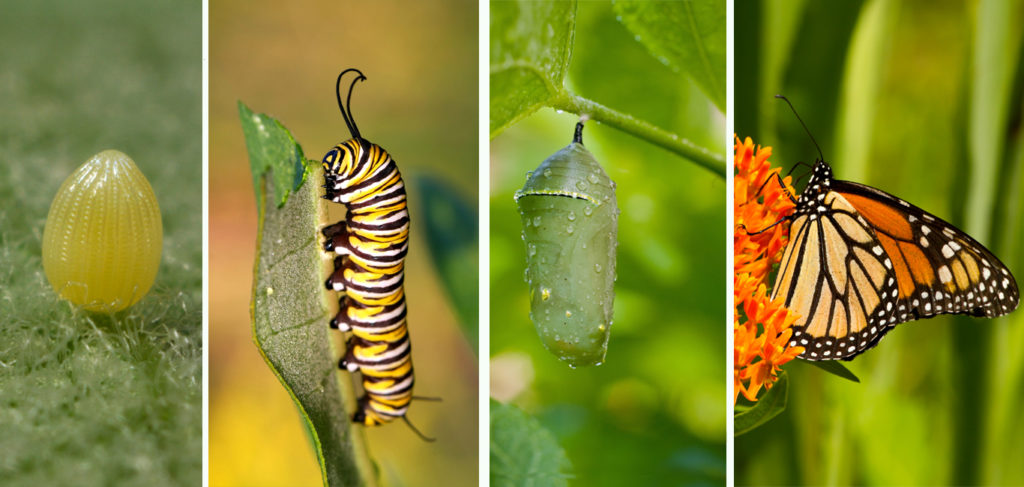
Butterfly Cultivation
Create a stunning butterfly haven in your garden with these five easy steps:
- Choose the right plants: Native and colorful plants such as milkweed, asters, and coneflowers attract butterflies.
- Provide shelter: Add a few flat stones for sunbathing and a butterfly house for shade.
- Offer food sources: Provide nectar-rich flowers with different shapes or feed them with ripe fruit on plates.
- Avoid pesticides: Use organic gardening techniques to avoid harming butterfly larvae and caterpillars.
- Maintain your garden: Creating a garden requires effort. Water regularly, prune accordingly, and keep that magical space free of weeds.
Did you know that monarch butterfly populations have decreased by more than 80% over the past two decades? You can make a significant difference for these beautiful insects by creating a safe environment in your yard.
Join The Movement!
Create an inviting habitat that will thrive with life by planting native species that are specially designed to feed local butterfly species. Take action today to help preserve these fascinating creatures!
Frequently Asked Questions
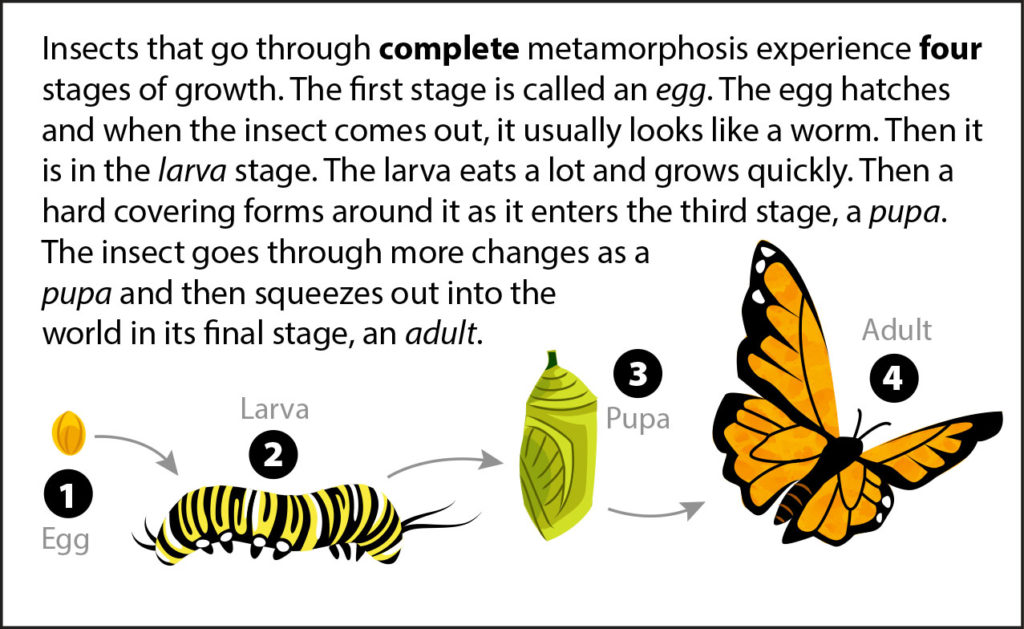
Q: How long does a butterfly live?
A: The lifespan of a butterfly can vary depending on the species, but on average, a butterfly typically lives for a few weeks to a few months.
Q: How does a butterfly evolve from an egg to an adult?
A: The evolution of a butterfly from egg to adult occurs in four stages: egg, larva (caterpillar), pupa (chrysalis), and adult.
Q: What do butterflies eat?
A: Butterflies primarily feed on nectar from flowers, but some species also feed on tree sap, rotting fruit, and even animal dung.
Q: How do butterflies avoid predators?
A: Butterflies use a variety of adaptations to avoid predators, including camouflage, mimicry, and toxic chemicals in their bodies that make them unpalatable to predators.
Q: Where do butterflies migrate?
A: Some butterfly species, such as the monarch butterfly, migrate long distances each year to overwinter in warmer climates.
Q: Are butterflies important to the ecosystem?
A: Butterflies are important pollinators and a vital part of many ecosystems. They help to ensure the survival of many plant species and are an important food source for other animals.

